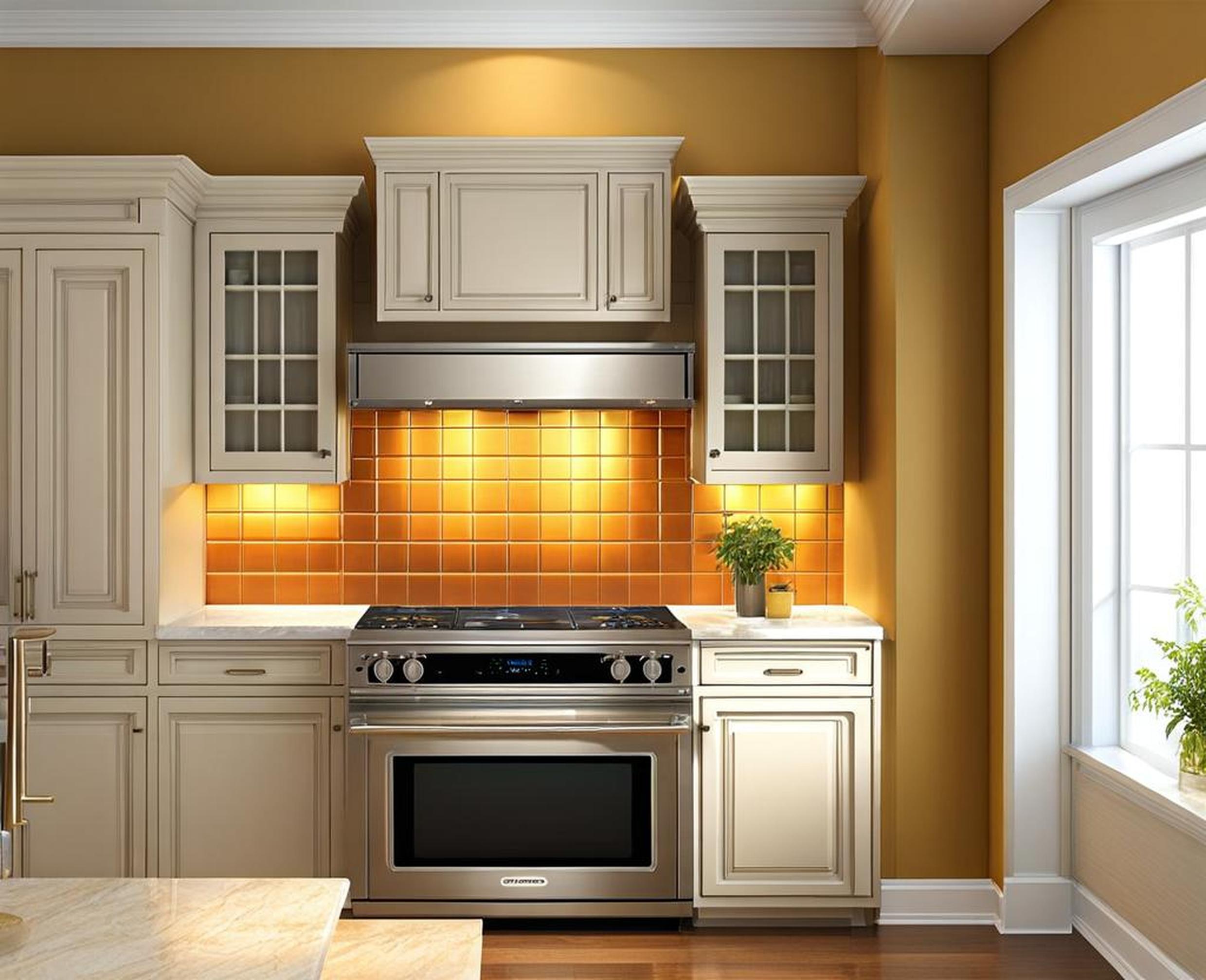Installing a microwave oven over your stove provides convenience by saving counter space. However, proper installation is crucial to prevent potential hazards and ensure it functions correctly. One key factor is determining the ideal mounting height above your stove cooktop.
Standard Recommended Height Above Stove
The general rule of thumb is to install the bottom of the microwave at 54 inches above the floor. This leaves about 18 inches of clearance between the microwave and a typical 36-inch high stove cooktop.

Maintaining this 18-inch clearance is important for allowing proper ventilation and preventing heat damage. The 54-inch minimum height is a good standard height for accessibility as well.
Consider the Stove Cooktop Height
While 36 inches is typical, stove cooktop heights can vary from 30 to 38 inches depending on the model. Before installing your microwave, be sure to measure the height of your cooktop.
If your cooktop height differs from the standard 36 inches, adjust the mounting height accordingly to maintain the recommended 18 inches of clearance.
Consider Users’ Heights
The microwave mounting height also affects convenience of use. If it’s installed too high, it may be awkward to reach in comfortably. If it’s too low, it could feel cramped.
Consider the heights of the primary users and find the optimal balance between clearance and ergonomics.
Safety Concerns
While the 18-inch clearance guideline has ventilation and damage prevention in mind, it also serves an important safety purpose.
Having an adequate gap between the microwave and cooktop prevents the potential buildup of heat, grease and combustible gases. This reduces the fire hazard risk.
Be sure to check the manufacturer’s instructions for their specific recommended clearance. Also look up local building codes for any relevant regulations.
Other Microwave Placement Factors
In addition to the vertical height above the stove, there are other considerations for where to place the microwave horizontally:
Proximity to Sinks
Avoid placing the microwave directly above a sink. Steam, condensation and potential leaks can lead to water damage issues.
It’s best to allow 12-15 inches of clearance from sinks.
Access to Electrical Outlet
Make sure there is a properly grounded outlet in close vicinity that the microwave power cord can reach. Avoid using extension cords as these can overheat.
Ventilation Needs
Microwaves require proper ventilation, often through external ducting. If also being used to vent cooking fumes from the stove, regular duct and filter cleaning is a must.
Proper ventilation directed outside is important for correct microwave functionality.
Installation Methods
Here are some common ways to mount your microwave:
Wall Stud Mounting
Securely fastened into wall studs using lag bolts, this is a sturdy mounting option. If needed, add wood blocking between studs to provide attachment points.
Under Cabinet Mounting
Special mounting kits allow installing under a cabinet. Verify the cabinet’s weight rating is sufficient to support the microwave.
Countertop
For a movable option, simply place the microwave on countertop. Be aware of weight limits based on your countertop material.
Following the standard 54 inch minimum mounting height will allow proper clearance between your microwave and cooktop for safety. But also consider the microwave’s ventilation needs and ergonomics for users.
By taking all these factors into account, you can find the ideal placement for seamless microwave integration into your cooking space.
